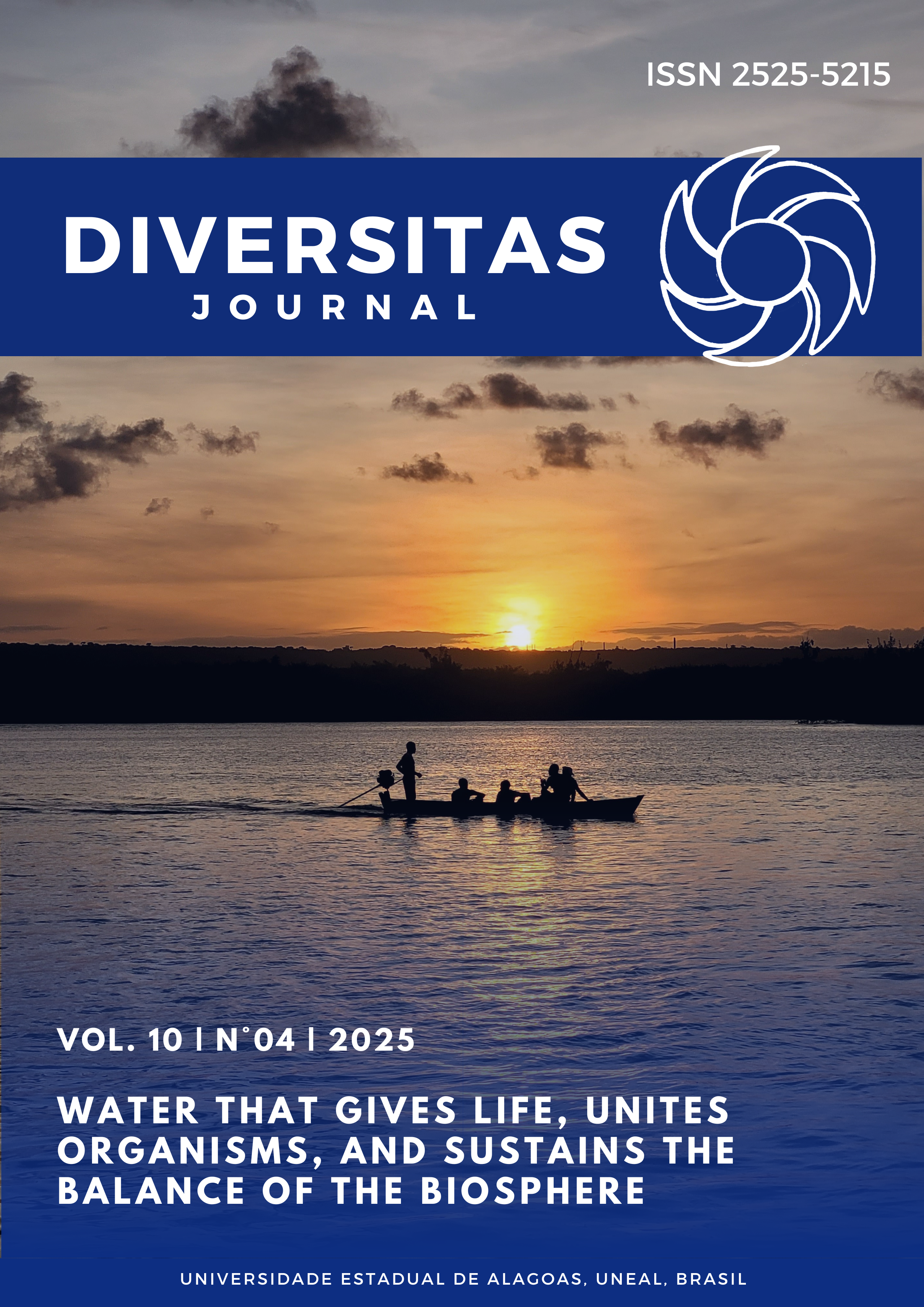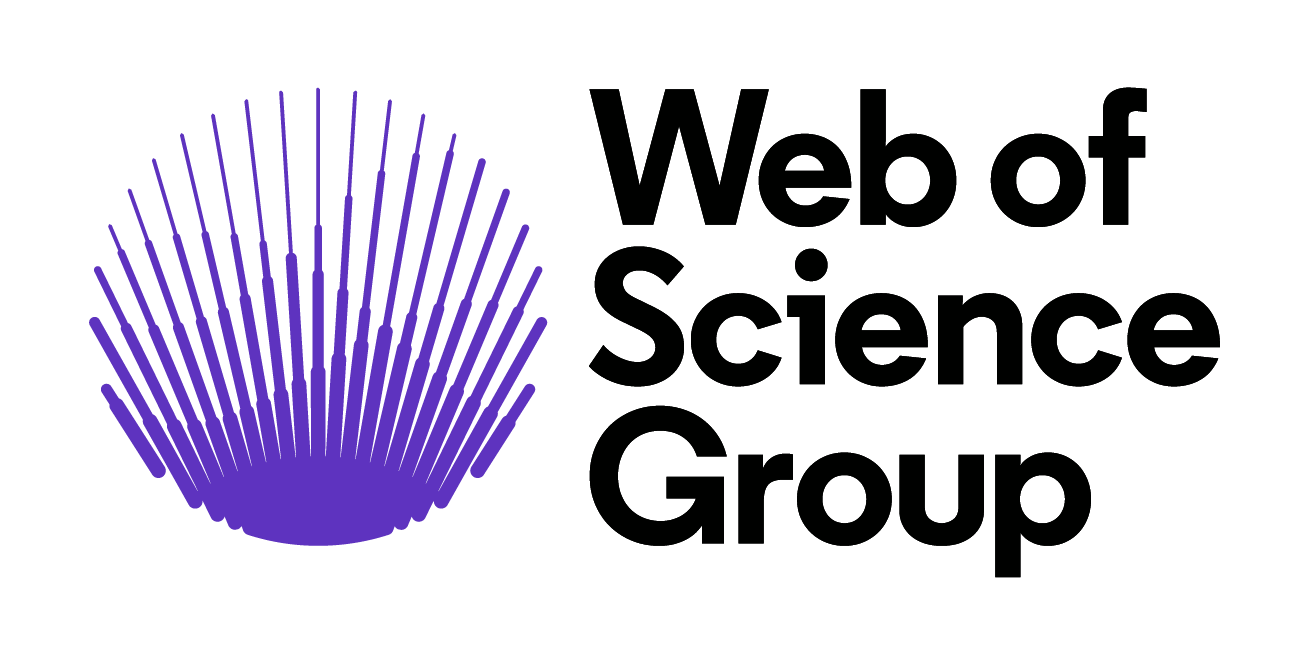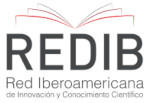Obesity in Childhood and Adolescence: a Review
DOI:
https://doi.org/10.48017/dj.v10i4.2665Keywords:
childhood obesity, adolescent obesity, overweight, risk factors, cognitive-behavioural theoryAbstract
Obesity in childhood and adolescence is considered a significant public health concern both nationally and globally, as it results in several health problems and long-term psychosocial complications. In addition, this concern has been growing due to overweight and obesity, showing an increase worldwide of more than 340 million children and adolescents aged 5 to 19 years being overweight. Research has produced a vast amount of literature about obesity, namely in terms of the impact of intervention with cognitive-behavioral therapy. However, conclusions on this review article point to the need to intensify the investigation of obesity in childhood and adolescence, so that this problem can be monitored from an early age, minimizing the impact of medium and long-term consequences.
Metrics
References
Adams, E. L., Caccavale, L. J., Smith, D., & Bean, M. K. (2020). Food insecurity, the home food environment, and parente feeding practices in the era of COVID-19. Obesity (Silver Spring), 28(11), 2056-2063. doi: https://doi.org/10.1002/oby.22996
Allabadi, H., Dabis, J., Aghabekian, V., Khader, A., & Khammash, U. (2020). Impact of COVID-19 lockdown on dietary and lifestyle behaviours among adolescents in Palestine. Dynamics of Human Health, 7(2). doi: http://www.journalofhealth.co.nz/?page_id=2170
American Heart Association, Gidding, S. S., Dennison, B. A., Birch, L. L., Daniels, S. R., Gillman, M. W., Lichtenstein, A. H., Rattay, K. T., Steinberger, J., Stettler, N., Horn, L. V. (2006). Dietary recommendations for children and adolescentes: a guide for practitioners. Pediatrics, 117(2), 544-559. doi: https://doi.org/10.1542/peds.2005-2374
Bombak, A. E., Meadowns, A., & Billette, J. (2019). Fat acceptance 101: Midwestern american women’s perspective on cultural body acceptance. Health Sociology Review, 28(2), 194-208. doi: https://doi.org/10.1080/14461242.2019.1604150
Castelnuovo, G., Pietrabissa, G., Manzoni, G. M., Cattivelli, R., Rossi, A., Novelli, M., Varallo, G., & Molinari, E. (2017). Cognitive behavioral therapy to aid weight loss in obese patients: current perspectives. Psychology Research and Behavior Management,10, 165-173. doi: https://doi.org/10.2147/prbm.s113278
Chan, C. M. S. (2014). Health-related quality of life of preschool caregivers in Hong Kong. Health Promotion Internacional, 29(2), 287-295. doi: https://doi.org/10.1093/heapro/das058
Curry, S. A. (2017). Obesity epidemic: Pharmaceutical weight loss. Rhode Island Medical Journal, 100(2), 18-20.
de Paula, M. B., Santos, I. L. L., Ide, B. H., Moraes, B. L., de Mello, E. V., & Rabelo, I. O. (2022). Intervenções direcionadas ao sobrepeso e obesidade infantil: uma revisão narrativa. Brazilian Journal of Health Review, 5(2), 6354-6363. doi: https://doi.org/10.34119/bjhrv5n2-210
Davis, J. M. (2010). What is early childhood education for sustainability? J. M. Davis (Ed.) Young Children and the Environment: Early Learning for Sustainability (pp. 21-42). Melbourne: Cambridge University Press.
Forman, E. M., Butryn, M. L., Manasse, S. M., Crosby, R. D., Goldstein, S. P., Wyckoff, E. P., & Thomas, J. G. (2016). Acceptance-based versus standard behavioral treatment for obesity: Results from the mind your health randomized controlled trial. Obesity (Silver Spring), 24(10), 2050-2056. doi: https://doi.org/10.1002/oby.21601
Franks, P. W., Hanson, R. L., Knowler, W. C., Sievers, M. L., Bennett, P. H., & Looker, H. C. (2010). Childhood obesity, other cardiovascular risk factors, and premature death. The New England Journal Of Medicine, 362(6), 485-493. doi: https://doi.org/10.1056/nejmoa0904130
Grilo, C. M., Masheb, R. M., Wilson, G. T., Gueorguieva, R., & White, M. A. (2011). Cognitive-behavioral therapy, behavioral weight loss, and sequential treatment for obese patients with binge-eating disorder: a randomized controlled trial. Journal of Consulting and Clinical Psychology, 79(5), 675-685. doi: https://doi.org/10.1037/a0025049
Hruby, A., & Hu, F. B. (2015). The epidemiology of obesity: A big picture. Pharmacoeconomics, 33(7), 673-689. doi: https://doi.org/10.1007%2Fs40273-014-0243-x
Huizar, M. I., Arena, R., & Laddu, D. R. (2020). The global fodd syndemic: The impact of food insecurity, malnutrition and obesity on the healthspan amid the COVID-19 pandemic. Progress in cardiovascular diseases, 64, 105-107. doi: https://doi.org/10.1016%2Fj.pcad.2020.07.002
Kimm, S. Y. S., Glynn, N. W., Obarzanek, E., Kriska, A. M., Daniels, S. R., Barton, B. A., & Liu, K. (2005). Relation between the changes in physical activity and body-mass index during adolescence: a multicentre longitudinal study. Lancet, 366(9482), 301-307. doi: https://doi.org/10.1016/s0140-6736(05)66837-7
Ling, J., Robbins, B., & Wen, F. (2015). Interventions to prevent and manage overweight or obesity in preschool children: A systematic review. International Journal of Nursing Studies, 53, 270-289. doi: https://doi.org/10.1016/j.ijnurstu.2015.10.017
Mattioli, A. V., Pinti, M., Farinetti, A., & Nasi, M. (2020). Obesity risk during collective quarantine for the COVID-19 epidemic. Obesity Medicine, 20. doi: https://doi.org/10.1016%2Fj.obmed.2020.100263
McDowell, M. A., Fryar, C. D., Ogden, C. L., & Flegal, K. M. (2008). Anthropometric reference data for children and adults: United States, 2003-2006. National Health Statistics Reposts, (10), 1-48.
Millimet, D., Tchernis, R., & Husain, M. (2010). School nutrition programs and the incidence of childhood obesity. Journal of Human Resources, 45(3), 1-37.
Monsell, A., Krzanowski, J., Page, L., Cuthbert, S., & Harvey, G. (2021). What mental health professionals and organisations should do to address climate change. BJPsych Bulletin, 45(4), 215-221. doi: https://doi.org/10.1192/bjb.2021.17
Nogueira, H., Lourenço, A., Gama, A., Mourão, I., Marques, V. R., & Padez, C. (2014). Desigualdades sociais em saúde: o exemplo da obesidade infantil. Cadernos de Geografia (33), 133-140. doi: http://dx.doi.org/10.14195/0871-1623_33_12
Odgen, C. L., Carroll, M. D., Curtin, L. R., McDowell, M. A., Tabak, C. J., & Flegal, K. M. (2006). Prevalence of overweight and obesity in the United States, 1999-2004. JAMA, 295(13), 1549-1555. doi: https://doi.org/10.1001/jama.295.13.1549
Olivares, P. R., Cossio-Bolaños, M. A., Gomez-Campos, R., Almonacid-Fierro, A., & Garcia-Rubio, J. (2015). Influence of parents and physical education teachers in adolescent physical activity. International Journal of Clinical and Health Psychology, 15(2), 113-120. doi: https://doi.org/10.1016/j.ijchp.2015.01.002
Oliveira, F., & Soares, L. (2011). Programa piloto de intervenção para pais de crianças com problemas de obesidade. Psicologia Saúde & Doenças,12(2), 197-211. doi: https://www.researchgate.net/publication/237033573_Programa_piloto_de_intervencao_para_pais_de_criancas_com_problemas_de_obesidade
Pacheco, B., Renner, J. S., Nunes, M. F., & Rocha, A. L. C. (2019). Moda inclusiva: perceção de mulheres obesas em relação ao corpo e ao vestuário. Revista Ártemis, 27(1), 443-456.
Papalia, D. E. & Feldman, R. D. (2013). Desenvolvimento Humano (12ª ed.; C. Monteiro & M. de C. Silva, Trads.). Porto Alegre RS: AMGH.
Quattrin, R., Liu, E., Shaw, N., Shine, B., & Chiang, E. (2005). Obese children who are referred to the pediatric endocrinologist: characteristics and outcome. Pediatrics, 115(2), 348-351. doi: https://doi.org/10.1542/peds.2004-1452
Rauber, A. B., Castro, H. O., Marinho, A., Vicente, J. B., Ribeiro, H. L., Monteiro, L. Z., Reis, P. I., Simões, H. G., & Campbell, C. S. G. (2018). Effects of a physical activity and nutritional intervention in overweight and obese children through an educational and recreational camp. Nutrition and health, 24(3), 145-152. doi: https://doi.org/10.1177/0260106018771519Reas, D. L., & Grilo, C. M. (2008). Review and meta-analysis pf pharmacotherapy for binge-eating disorder. Obesity (Silver Spring), 16(9), 2024-2038. doi: https://doi.org/10.1038/oby.2008.333
Reinke, W. M., Stormont, M., Herman, K. C., & Newcomer, L. (2014). Using coaching to support teacher implementation of classroom-based interventions. Journal of Behavioral Education, 23(1), 150–167. doi: https://doi.org/10.1007/s10864-013-9186-0
Reisch, L. A., & Gwozdz, W. (2011). Chubby cheeks and climate change: childhood obesity as a sustainable development issue. International Journal of Consumer Studies, 35(1), 3-9. doi: https://doi.org/10.1111/j.1470-6431.2010.00893.x
Rito, A., Mendes, S., Baleia, J., Gregório, M. J. (2021). Childhood obesity surveillance initiative. Lisboa: INSA.
Robison, T. N., (2010). Save the world, prevent obesity: piggybacking on existing social and ideological movements. Obesity (Silver Spring, Md.), 18(1), 17-22. doi: https://doi.org/10.1038/oby.2009.427
Serra, B. K., Loch, F. C. C., Carvalho, D. R., Scheeren, E. M., Vosgerau, D. S. R. (2018). Intervenções de atividades física e educação nutricional para combater a obesidade infantil na escola: Revisão sistemática. Revista Brasileira de Obesidade, Nutrição e Emagrecimento, 12(73), 665-679. doi: http://www.rbone.com.br/index.php/rbone/article/view/766
Silva, P., Lott, R., Mota, J., & Welk, G. (2014). Direct and indirect effects of social support on youth physical activity behavior. Pediatric Exercise Science, 26(1), 86-94. doi:
1123/pes.2012-0207
Skouteris, H., Cox, R., Huang, T., Rutherford, L., Edwards, S., & Cutter-Mackenzie, A. (2013). Promoting obesity prevention together with environmental sustainability. Health Promotion International, 29(3), 454-462. doi: https://doi.org/10.1093/heapro/dat007
Stavridou, A., Kapsali, E., Panagouli, E., Thirios, A., Polychronis, K., Bacopoulou, F., Psaltopoulou, T., Tsolia, M., Sergentanis, T. N., & Tsitsika, A. (2021). Obesity in children and adolescents during COVID-19 pandemic. Children, 8(2). doi: https://doi.org/10.3390/children8020135
Swencionis, C., & Rendell, S. L. (2012). The psychology of obesity. Abdominal imaging, 37(5), 733-737. doi: https://doi.org/10.1007/s00261-012-9863-9
Timperio, A., Salmon, J., Telford, A., & Crawford, D. (2005). Perceptions of local neighbourhood environments and their relationship to childhood overweight and obesity. International Journal of Obesity, 29(2), 170-175. doi: https://doi.org/10.1038/sj.ijo.0802865
Vinha, W., & Nunes, A. M. (2021). Childhood obesity: Diagnosis of body composition of 7 and 10-year-old children from two schools with diferente socioeconomic levels in the municipality of Varginha. Brazilian Journal of Development, 7(9), 91287-91307. doi: 10.34117/bjdv7n9-336
WHO Regional Office for Europe (2007). “The challenge of obesity in the WHO European Region and the strategies for response.” Copenhagen: WHO Regional Office for Europe
World Health Organization. (2019). Coronavirus disease (COVID-19). Retrieved from https://www.who.int/health-topics/coronavirus#tab=tab_1
World Health Organization. (2021). Obesity and overweight. Retrieved from https://www.who.int/en/news-room/fact-sheets/detail/obesity-and-overweight
Yang, X., Telama, R., Hirvensalo, M., Viikari, J. S. A., & Raitakari, O. T. (2009). Sustained participation in youth sport decreases metabolic syndrome in adulthood. International Journal of Obesity, 33(11), 1219-1226. doi: https://doi.org/10.1038/ijo.2009.171
Downloads
Published
How to Cite
Issue
Section
License
Copyright (c) 2025 Luísa Soares, Sara Cabral, Ana Lúcia Faria

This work is licensed under a Creative Commons Attribution 4.0 International License.
The Diversitas Journal expresses that the articles are the sole responsibility of the Authors, who are familiar with Brazilian and international legislation.
Articles are peer-reviewed and care should be taken to warn of the possible incidence of plagiarism. However, plagiarism is an indisputable action by the authors.
The violation of copyright is a crime, provided for in article 184 of the Brazilian Penal Code: “Art. 184 Violating copyright and related rights: Penalty - detention, from 3 (three) months to 1 (one) year, or fine. § 1 If the violation consists of total or partial reproduction, for the purpose of direct or indirect profit, by any means or process, of intellectual work, interpretation, performance or phonogram, without the express authorization of the author, the performer, the producer , as the case may be, or whoever represents them: Penalty - imprisonment, from 2 (two) to 4 (four) years, and a fine. ”


















